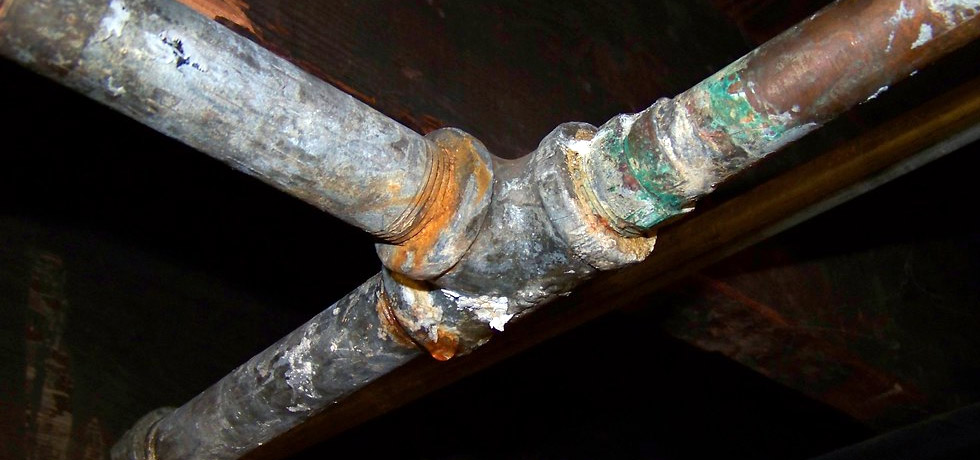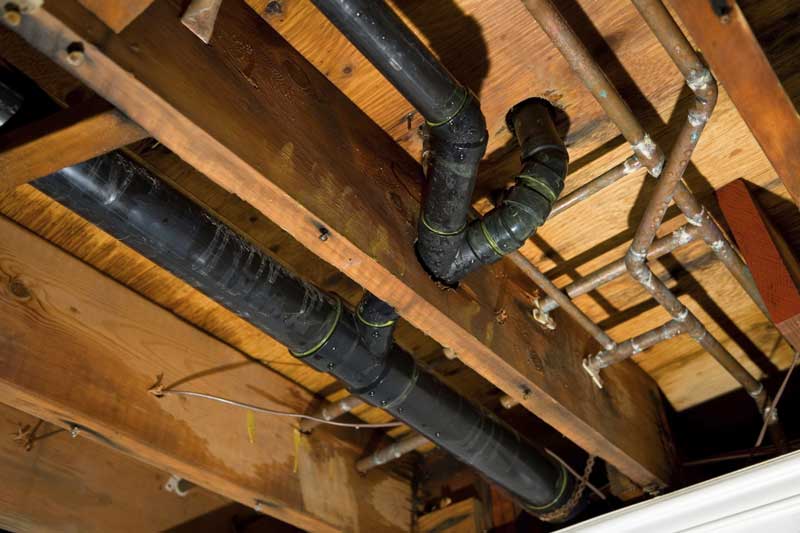Professional Guidance on Handling Plumbing in Older Homes
Professional Guidance on Handling Plumbing in Older Homes
Blog Article
Everyone is bound to have their own way of thinking on the subject of Plumbing Problems In Old Homes.

Older homes often feature appeal, character, and background, but they can likewise bring a host of pipes problems. Whether you're dealing with maturing pipes, low tide pressure, or leakages, recognizing exactly how to address these typical problems is critical to preserving a secure and useful home. In this guide, we'll discover the common pipes challenges encountered by older homes and offer useful remedies to keep your pipes in leading shape.
Recognizing Common Pipes Concerns
Aging Pipelines
One of the most usual issues in older homes is aging pipes. Relying on the era in which your home was developed, the pipelines might be made from products that have actually weakened over time, such as galvanized steel, cast iron, and even lead. These products can corrode, end up being brittle, or develop leakages, leading to water damage and prospective carcinogen.
Water Top Quality Testing
Older pipelines can influence the top quality of your water. Conduct a water quality examination to look for contaminants such as lead, rust, or various other contaminations that may be presented by maturing pipes.
Solutions for Common Plumbing Concerns
Changing Aging Pipes
If your home has old, degrading pipelines, consider replacing them with contemporary products like copper or PEX. This can be a substantial investment, however it will protect against future issues and enhance the security and integrity of your plumbing system.
Repairing Low Tide Pressure
To take care of low tide stress, beginning by cleaning or changing old components and getting rid of mineral build-up in the pipelines. If the trouble lingers, it may be needed to change sections of corroded pipes.
Repairing and Replacing Leaking Pipelines
For tiny leakages, you can utilize pipeline clamps or epoxy putty as a short-lived solution. Nonetheless, it's best to replace leaking pipelines totally to stay clear of more damages.
Updating Components
Updating old components to contemporary, water-efficient designs can enhance your home's plumbing performance and decrease water usage. Search for fixtures with the WaterSense label for the very best performance.
Managing Pipeline Deterioration
If your pipelines are rusted, replacing them with corrosion-resistant materials like copper, PVC, or PEX is the best solution. Normal assessments and water high quality upkeep can assist avoid even more corrosion.
Low Tide Pressure
If you're experiencing low tide stress, it could be due to natural resources, deterioration inside the pipes, or old fixtures that are no more functioning effectively. This can be a major inconvenience, especially in locations like showers and sinks.
Dripping Pipelines
Leaks are another constant problem in older homes, typically brought on by corroded or worn-out pipelines. Also little leaks can bring about considerable water damages, mold development, and boosted water bills otherwise attended to quickly.
Outdated Components
Out-of-date pipes fixtures such as taps, bathrooms, and showerheads not only look old however may additionally be less effective, susceptible to leaks, or incompatible with modern-day pipes criteria.
Pipeline Rust
Deterioration is a typical trouble in older pipes, particularly those made from galvanized steel or cast iron. Rusty pipes can limit water flow, trigger staining, and at some point result in leakages or pipe ruptureds.
Assessing the Problem of Your Plumbing
Examining Visible Pipelines
Beginning by examining any kind of visible pipes in your house, such as those in basements, crawl spaces, or under sinks. Seek signs of deterioration, leakages, or rust, which can suggest underlying concerns.
Checking for Leakages
Check for leaks by evaluating areas around faucets, bathrooms, and under sinks. You can additionally monitor your water meter prior to and after a duration of no water use to identify hidden leaks.
When to Call an Expert
While some pipes problems can be taken care of with do it yourself solutions, there are times when it's finest to call a professional. If you're handling significant leaks, comprehensive rust, or are unclear about the condition of your pipes, an accredited plumbing can provide expert analysis and fixing.
Preventive Maintenance Tips
Regular Assessments
Consistently inspect your pipes system for indicators of wear and tear. Catching issues early can protect against pricey fixings down the line.
Water Stress Law
Guarantee your water stress is within the advised array to avoid worrying your pipes and fixtures. A plumbing technician can set up a stress regulator if needed.
Water High Quality Upkeep
Set up water filters or softeners if your water high quality is poor. This can safeguard your pipes and fixtures from damage caused by hard water or contaminants.
Aggressive Pipeline Substitute
If your home has very old pipes, consider positive replacement prior to significant problems occur. This can save you from emergency fixings and water damage.
Conclusion
Dealing with pipes concerns in older homes needs a combination of vigilance, preventive maintenance, and prompt upgrades. By recognizing the common challenges and understanding when to seek professional assistance, you can ensure your pipes system continues to be practical and reputable for years to come.
7 Common Plumbing Issues in Older Homes
Read More Plumbing Articles
Whether you're mulling over purchasing your dream period property, or you already own one, being aware of common plumbing problems in old homes can help you avoid expensive mishaps.
Many plumbing problems in old homes are similar to those faced in newer properties, but some are more prevalent in houses over a certain age. If you've recently bought an old house or haven't had your aging plumbing system inspected in a while, it's worth keeping an eye out for the following issues:
Bad Pipe Materials
Depending on the age of your home, the pipe materials used in your plumbing system may not comply with modern building codes and could be unsafe.
Lead pipes are the most dangerous type of old plumbing pipes. This metal was once used extensively for manufacturing water pipes because it's easy to shape and has a long lifespan. Plumbers also used it to solder joints between pipes made from other materials. However, lead can cause serious health problems, particularly in children. Drinking water from pipes containing lead can lead to lead poisoning symptoms, such as stomach pain and fatigue, so it's essential to replace them if you discover them in your home.
Outdated Fixtures
Even if the previous owners installed high-quality fixtures, these won't be immune to the effects of age and wear and tear. Over time, fixtures can corrode and wear down, increasing the likelihood of leaks and clogs.
Sometimes, an outdated fixture can be a minor irritation that makes using your plumbing system less convenient. However, it's best to maintain older plumbing components carefully and replace them when they show signs of failure to avoid a major leak and water damage.
Corroded or Leaking Pipes
Corroded pipes are a common plumbing issue in old homes. Corrosive substances in the water supply can gradually break down the metal used to make the pipes, eventually causing leaks. Corrosion can also cause sediment to build up, increasing the chances of a clogged pipe. All these issues take time to develop, making them more likely in old house plumbing.
Drain Problems
Older home drainage systems were often installed before the arrival of appliances such as garbage disposals, so they're frequently incapable of handling modern household usage. The result could be frequent clogs or water backing up into sinks and other fixtures.
A failing sewer line is the most serious drainage issue commonly encountered in old houses. This problem is more likely if you've remodeled your home to add more fixtures, placing more pressure on a sewer line not designed for the purpose. Eventually, the line can become clogged, causing unpleasant indoor smells, poor drainage and contaminated wastewater backing up into your fixtures.
Pipe Bellies
Pipe bellies develop when pipes buried in your home's foundation start sagging as the building settles. They create downward slopes, affecting water drainage and increasing the risk of significant blockages. You don't need to worry about pipe bellies in a pressurized main line, as the water pressure prevents the pipes from clogging, but they can cause issues in drain lines.
Root Intrusion
Root intrusion occurs when trees and other shrubs grow roots too close to your sewer line or water service line. Sometimes, the roots penetrate the pipe walls, leading to leaks and soft or wet areas in your yard.
Unfortunately, root intrusion is a more common plumbing problem in old homes. That's because older houses are more likely to have pipe bellies allowing standing water to accumulate, attracting roots to the moist conditions.
https://www.elocal.com/resources/home-improvement/plumbing/faq/plumbing-issues-in-older-homes/

I hope you enjoyed reading our part about Common Plumbing Problems in Older Homes. Thanks a ton for spending some time to read through our post. Sharing is caring. You won't know, you could be doing someone a favor. I value your readership.
Booking Report this page